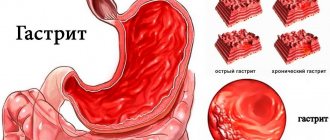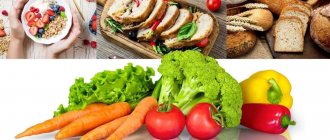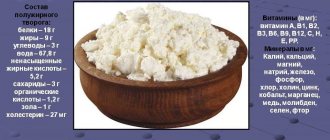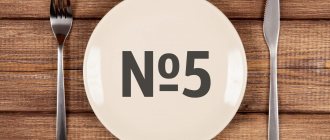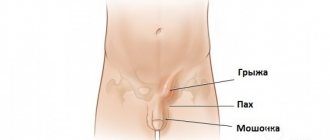The busy pace of life today leads to the fact that most people do not care about their health. Snacking on the go and eating junk food have become a habit. If we add bad habits (alcohol, smoking), constant stressful situations, nervous overstrain to the above list, it is not surprising that the body regularly malfunctions.
Inattention to health affects digestion in the form of disorders and inflammatory processes. Gastritis often occurs - inflammation of the inner lining of the digestive organs (stomach, intestines).
Gastritis in a patient
Cabbage for gastritis
In folk medicine, such a dish is often used as an adjuvant for the treatment of gastritis.
People with gastritis are forced to pay special attention to the formation of their menu. It is important to include only those products that will not harm the gastric mucosa and will be well absorbed. Stewed, boiled, baked or sauerkraut for gastritis can be a tasty and healthy addition to the menu. If the vegetable has not undergone heat or other processing, its use should be discarded.
The benefits of eating fresh vegetables for inflammation of the inner wall of the stomach have been known for a long time. Let's figure out whether sauerkraut is useful for gastritis.
The product retains a lot of useful and necessary substances, acts as an anti-inflammatory and strengthening pain reliever, and prevents the formation of malignant tumors. Two hundred grams contain 40 milligrams of vitamin C (the daily requirement for an adult), phosphorus, calcium, and zinc are present.
Sauerkraut has a positive effect on the functioning of the stomach and intestines (increases acid levels), improves food digestion, helps against constipation, and clears toxins. Pickled vegetables are recommended to be taken as a prophylactic against gastritis, ulcers and other diseases of the gastrointestinal tract.
Sauerkraut as a traditional medicine for gastritis
In folk medicine, this dish is often used as an adjuvant for the treatment of gastritis. Of course, it is impossible to completely replace traditional drug treatment with pickled vegetables, but its use can help speed up recovery.
If gastritis is chronic, the patient is recommended to eat pickled vegetables 25–30 minutes before each meal. In order for digestion to normalize, this treatment method should be used daily for 15–20 days. For hypoacid and anacid gastritis, cabbage brine will be useful. To enhance the effect, you will need to add a few drops of lemon juice. This remedy should be consumed 30 minutes before meals every day for four weeks. In the first days, it is enough to drink 3 tablespoons, but gradually the dosage should increase. After a week, the volume should reach half a glass. This amount of brine should be taken until the end of the course of treatment.
What kind of cabbage can you eat for gastritis of the stomach with low and high acidity?
For gastritis, experts allow eating white cabbage, but only in moderation. It is recommended to eat cabbage pickled, stewed or boiled.
For gastritis, experts allow eating white cabbage, but only in moderation. It is recommended to eat cabbage in pickled, stewed or boiled form.
In its raw form, with gastritis, cabbage can cause unpleasant discomfort and even heartburn, which experts explain by the presence of a large amount of fiber in the vegetable, which can damage the irritated and inflamed gastric mucosa. But cabbage contains many useful substances that are necessary for problems with digestive structures. The vegetable contains vitamin U and nicotinic acid, which promote accelerated healing of damaged mucous membranes and restoration of the protective layer on their surface.
Nicotinic acid is able to neutralize cholesterol excesses, ridding the body of such unsafe atherosclerotic plaques, and also normalizes blood circulation and metabolic processes. If gastritis of any type has developed, it is recommended to eat cabbage in processed form, for example, pickled, boiled or stewed. During remission periods, cabbage helps for preventive purposes, but if the pathology worsens, it is better to avoid the vegetable for a while.
Is it possible to have pickled vegetables for gastritis?
The essence of the fermentation process is adding vegetables, chopped or whole, to the brine. After a few days, the fermentation process starts and an acidic environment is formed. Acid negatively affects the gastric mucosa, irritates it, and as a result, inflammation does not subside longer. In the therapeutic diet plan, there is an indication that the use of sauerkraut is limited, but not prohibited. If a patient with high acidity experiences heartburn, belching, or epigastric pain after eating, then the product should be excluded.
This vegetable is recommended to be included in the diet of adults and children due to its wide range of useful substances. There are about 150 types of cabbage, so even on its basis you can create a varied diet.
White cabbage varieties contain useful substances:
- vitamin C;
- beta-carotene;
- vitamin K;
- potassium;
- magnesium;
- iron;
- zinc;
- iodine;
- organic acids;
- cellulose.
During the fermentation process, lactic and acetic acids are formed in products.
Thanks to them, the vegetable has a detrimental effect on pathogens of intestinal infections. They increase the immune system's resistance to infections, support vision, reduce blood pressure, support the contractility of the heart muscle, and regulate the process of hematopoiesis. Microelements improve the functioning of the thyroid gland and replenish iodine deficiency. Zinc improves the condition of hair and nails and prevents stress. Even a small portion of cabbage gives you a feeling of fullness, which helps with weight loss.
During the fermentation process, lactic and acetic acids are formed in products. Thanks to them, the vegetable has a detrimental effect on pathogens of intestinal infections. And cabbage fiber regulates intestinal activity and prevents constipation.
Among the beneficial properties of sauerkraut are the following:
- prevention of scurvy;
- treatment of inflammation in the oral cavity;
- prevention of vitamin deficiency;
- activation of pancreatic secretion;
- helps cope with toxicosis;
- prevention of diseases of the cardiovascular system.
The benefits of a vegetable are determined by the size of the cut. If you ferment it in large pieces, more nutrients will be retained.
Examples of diets for gastritis
The following nutritional recommendations for different types of gastritis allow patients to quickly cope with the painful symptoms of the disease. It is important to strictly adhere to your doctor’s nutritional instructions, since even minor deviations from the diet immediately affect your well-being. When following a diet for gastritis, the patient must adhere to the principles of a balanced diet. This means that the daily diet must satisfy the body in terms of calories, nutrients (proteins, fats, carbohydrates), vitamins and minerals. All these issues are discussed with your doctor.
Nutrition during exacerbation of gastritis
For acute gastritis, as well as chronic gastritis at the acute stage, the diet should be as strict as possible. All food is either boiled or steamed. It is prohibited to consume pasta, legumes, fatty meat, and seasonings.
The main task in acute forms of gastritis is to calm the gastric mucosa as quickly as possible. Therefore, all food should be thoroughly chewed and be warm.
Features of nutrition for gastritis with low acidity
With gastritis with low acidity, many restrictions are removed, since there is no danger of increased secretion of gastric juice. For this reason, the consumption of fermented milk products (kefir and yogurt) and weak natural coffee is allowed.
Prohibitions regarding fatty foods and fried foods for gastritis with low acidity remain. Also, with low acidity, you should not eat grapes, fresh baked goods and canned food.
Diet for gastritis with high acidity
Chronic gastritis with high acidity requires extreme discipline on the part of the patient. Sour vegetables, fruits and berries are strictly prohibited. Instead of fermented milk products, it is allowed to consume warm milk and natural non-acidic yoghurts.
For gastritis with high acidity, jelly will be useful, since it protects the stomach from the action of hydrochloric acid. Occasionally, with high acidity, you can afford honey and marshmallows.
Diet for erosive gastritis
With erosive gastritis, special attention should be paid to diet. Severe hunger and long breaks between meals should not be allowed. It is also important to monitor the temperature and texture of the food. When erosions occur, the stomach walls are especially sensitive to hot, cold and sour foods. You should not create additional problems for your stomach; it is important to strictly follow all recommendations.
Diet for atrophic gastritis
For atrophic gastritis, you can eat porridge with a small amount of milk, lean poultry, boiled and stewed vegetables, low-fat chicken broth and dried bread. When choosing a nutrition plan, the doctor must take into account acidity. It is allowed to eat baked vegetables, but only without crusts.
Diet for superficial gastritis
The principles of nutrition for superficial gastritis are practically no different from the general recommendations for patients with gastritis. It is important to avoid hot, cold, sour and mechanically rough foods. Such food irritates the gastric mucosa, only increasing painful symptoms.
Diet for antral gastritis
In case of antral feeding, special attention should be paid to the principles of fractional nutrition. You need to eat in small portions, without overloading your stomach with food. Kefir and yogurt should be excluded from dairy products. You are allowed to drink warm milk (with honey).
Diet for catarrhal gastritis
With the catarrhal form of gastritis, the patient should adhere to the standard nutritional requirements for gastritis. Strictly adhering to dietary recommendations is especially important in acute forms of catarrhal gastritis. This will help prevent the disease from becoming chronic.
Fruit diet
Doctors categorically do not recommend moving away from nutritional therapy for gastritis. This is especially true for special diets for weight loss. The fruit diet is no exception, which many use to combat extra pounds.
A fruit diet is dangerous for gastritis, primarily due to the abundance of organic acids contained in fruits. This is an additional irritation of the gastric mucosa, which will only worsen the course of the disease. A fruit diet is especially dangerous for acute gastritis and exacerbations of chronic forms of the disease. Doctors strongly do not recommend this kind of diet during acute stages. During remission, some relaxations in dietary nutrition are possible, but they also require prior consultation with your doctor.
Diet for gastritis for children
Unfortunately, gastritis occurs not only in adults, but also in children of different ages. The principles of dietary nutrition for adults and children with gastritis are the same. Children should also eat small, frequent meals. Fatty and fried foods should be excluded, and all nutritional recommendations should be followed depending on the acidity of the stomach.
A serious problem in the treatment of gastritis in children is the difficulty of controlling the child’s nutrition. This is especially difficult during school time, when a child can spend his pocket money on junk food. Parents should make an effort and always explain to their child the logic of dietary restrictions.
Sauerkraut and gastritis
Sauerkraut can be consumed during remission. It retains all the vitamins that are present in fresh vegetables. It is very useful to eat this product for the prevention of gastrointestinal diseases. Sauerkraut for gastritis has the following properties:
- increases intestinal motility and relieves constipation;
- normalizes intestinal microflora;
- Thanks to the high content of vitamin C, it strengthens the body’s protective functions;
- promotes restoration of the gastric epithelium.
This product can increase the acidity of the stomach, so it is useful for reduced secretion. Additionally, sauerkraut increases appetite, which is a valuable property for gastritis. For diseases that occur with high acidity, you should eat this dish with caution. If pickled vegetables are prohibited for stomach inflammation, this does not mean that you cannot eat cabbage at all. Its juice is used as a means to prevent gastrointestinal diseases. Cabbage increases gas formation, which can increase the symptoms of inflammation and cause additional discomfort.
In the first days of the acute period, it is excluded from the diet, then they start with a small portion, but always after cooking. Fresh vegetables contain coarse fiber, and it can injure sensitive mucous membranes, so it is necessary to thermally treat white cabbage, Brussels sprouts and Chinese cabbage for gastritis, to soften the fibers. It is these types that contain the most coarse fiber.
Sauerkraut for the stomach
Sauerkraut is a healthy product, but in case of some diseases its use should be approached with caution.
The benefits and harms of sauerkraut
- Sauerkraut is beneficial for the human body in the following ways:
- fermented vegetables contain microelements necessary for health. It contains a lot of ascorbic acid, B vitamins, vitamin E, K, PP, A and beta-carotene. The mineral composition is represented by potassium, sodium, calcium, magnesium, phosphorus, iron, manganese, copper, selenium and zinc.
- The product helps strengthen the immune system.
- contains vitamin U, which creates a “barrier” to the occurrence of ulcers in the gastrointestinal tract.
- antioxidants and sulforaphane prevent the development of cancer and protect against infections.
- lactic acid bacteria found in the fermented product improve intestinal microflora and displace pathogenic microflora, improving digestion.
- lowers cholesterol levels and prevents the occurrence of cardiovascular diseases.
- Helps reduce blood sugar levels and is recommended for diabetics.
- This is a good remedy for constipation and vitamin deficiency.
- its stable use reduces the frequency of asthmatic attacks.
Many properties of sauerkraut lead to the fact that frequent consumption of sauerkraut prevents the occurrence of gastritis and stomach ulcers.
Did you know? To ferment cabbage in a ten-liter container, it is enough to add only 2 tablespoons of table salt, since fermentation processes occur due to lactic acid bacteria and the presence of sugars in this vegetable. In the Balkans, cabbage is fermented without any salt at all. This product is healthier, but has a shorter shelf life.
- But this beneficial fermentation product can cause harm to the body, namely:
- It should be taken into account that the coarse fiber found in cabbage leaves is poorly absorbed and complicates digestion, and can cause increased gas formation; the acids contained in the fermented product irritate the mucous membranes of the gastrointestinal tract;
- High salt content retains fluid in the body, which increases blood pressure.
- Sauerkraut is not recommended in the following cases:
- hypertension;
- urolithiasis and gallstone disease;
- renal failure;
- pancreatitis in the acute phase;
- exacerbation of gastrointestinal diseases and peptic ulcers.
Use for gastritis of different acidity
The inclusion of sour vegetables in the daily diet can serve as a prevention of gastrointestinal diseases (gastritis, ulcers and dyspepsia). If these diseases are already present in your medical history, then you should consult a doctor on nutritional issues. The level of consumption of this product is affected by the acidity of the stomach and the form of the disease.
Important! When consuming sauerkraut and brine for gastritis, you should take into account your body’s reaction. If after eating you begin to experience heartburn, gastrointestinal pain and disorders, swelling or palpitations, then you need to exclude the product from your diet.
Fermented vegetables are prohibited for consumption during an exacerbation of the disease. It can only be used during the period of remission. Dishes that combine fermented product with hot pepper are prohibited, since spicy food is contraindicated for gastritis and stomach ulcers.
Fermented vegetables will be useful for low acidity, as it improves appetite, affects acid production and food absorption. But for gastritis with high stomach acidity, such a product should be eaten in limited quantities. It is better to give preference to a stew.
Use for peptic ulcers
Sauerkraut can be consumed for gastrointestinal diseases. Particularly useful is brine containing vitamin U, which promotes the healing of wounds, erosions and ulcers, since it does not irritate the mucous membranes as much as the vegetable product itself. The liquid fraction creates a favorable environment for beneficial bacteria, inhibiting harmful microorganisms. This is an excellent preventive measure for gastrointestinal problems, including peptic ulcers.
Did you know? German scientists conducted research and determined that consuming sauerkraut 2-3 times a week prevents the occurrence of intestinal cancer.
Fermented vegetables should only be consumed in a state of remission, in the absence of a high level of acidity. Gastritis and ulcers are recognized by doctors as precancerous conditions, and regular consumption of a fermented product will be a good prevention of gastrointestinal diseases.
But if unpleasant symptoms occur after eating a vegetable dish, you should exclude cabbage from the menu.
Sauerkraut with different types of acidity
Whether sauerkraut is allowed for gastritis depends on the acidity of gastric juice. The product is even recommended for hypoacid gastritis; it increases the acidity of the environment and provokes the secretion of gastric juice. For optimal functioning of the digestive tract, a serving of the vegetable should be taken 30 minutes before meals.
If the ratio of gastric juice components is normal, you can eat a little cabbage if it does not make you feel worse. People with acidity above normal should not eat this product during an exacerbation. But you can eat little by little during remission, if there is no discomfort in the stomach.
Cabbage soup description benefits
Shchi is a vegetable soup cooked in meat broth. Cabbage is the main vegetable component of cabbage soup, but is optional. It can be replaced with fresh herbs and root vegetables, for example turnips. In addition, cabbage soup contains roots (carrots, parsley), spices (onion, garlic, black pepper, bay leaf, dill) and, of course, sour dressing (brine, sour cream, sour apples). There may be no cabbage in cabbage soup, but acid must be present.
The dish is an invaluable source of fat-soluble vitamins and ascorbic acid. It has a beneficial effect on digestion processes and contains the necessary supply of carbohydrates and proteins. At the same time, cabbage soup cannot boast of high energy value - about 30 kcal per 100 grams of product. This fact will definitely please lovers of healthy eating.
Shchi is a vegetable soup cooked in meat broth.
Is it possible to have cabbage soup for gastritis?
The use of cabbage soup for gastritis depends on the type of cabbage soup and the method of its preparation. Sour cabbage soup from sauerkraut is definitely prohibited for gastritis. This is due to the fact that the dish sharply increases acidity and irritates the mucous membranes. But an inflamed stomach, more than ever, needs a gentle operating mode and maximum rest.
On the other hand, this does not mean at all that the patient should refuse such a nutritious dish. You just need to make certain changes to the cooking recipe. Sauerkraut is replaced with fresh cabbage. But they don’t take traditional white cabbage (it is strictly prohibited for gastritis), but Beijing cabbage.
As for the broth, we recommend using a weak meat broth. It is better to replace fatty pork with dietary meat. For example, chicken or veal. The remaining vegetables are added according to the traditional recipe.
Recipe for cooking cabbage soup for gastritis
Cabbage soup is a very healthy dish for people suffering from gastritis.
In order to prepare them you will need the following ingredients:
- 200 or 300 grams of white cabbage;
- just 1 potato, tomato, onion and carrot;
- a little vegetable oil;
- salt to taste (however, the diet for dishes with gastritis does not recommend adding too much salt).
First you will need to prepare all the vegetables. The potatoes must be peeled and washed thoroughly, then cut into thin strips. The cabbage needs to be finely chopped, the carrots peeled, washed and grated on a medium grater. The onion is peeled and finely chopped.
The tomato will need to be doused with boiling water in order to easily remove the peel. After the peel is removed, you need to cut the tomato into small pieces or grind it in a blender.
Then you need to take a pan, pour water into it and put it on the fire, while immediately adding cabbage and potatoes to it. As for carrots, onions and tomatoes, they must be stewed in a small amount of sunflower oil, since eating fried foods is absolutely prohibited for gastritis. After 10 minutes, after the water boils, you will need to add the stewed vegetables to the pan. After this, the cabbage soup will need to be cooked for no more than 15 minutes, and they will need to be salted.
Useful properties of sauerkraut for gastritis
The main advantage of sauerkraut is that this type of processing allows you to preserve the maximum amount of nutrients, including vitamins. For example, in order to get the daily requirement of vitamin C, a person only needs to eat two hundred grams of this fermented vegetable. In addition, it is very useful as a preventive measure for many diseases of the gastrointestinal tract. Attention! The diet of a patient with gastritis should be based on the recommendations of the attending physician. You should definitely consult with him regarding the introduction of any products, including sauerkraut, into the menu.
In most cases, those people who have already been diagnosed with gastritis can eat pickled vegetables. Due to its composition, it has a beneficial effect on the patient’s body, including:
- the vegetable is able to increase immunity, strengthening the body’s protective functions;
- normalizes microflora and improves intestinal motility;
- stimulates the restoration of the gastric epithelium.
For gastritis with high acidity, sauerkraut can be consumed with caution and in small quantities. It is advisable that the vegetable be prepared at home without the use of hot spices. If acidity is low, such dishes will be useful as a natural appetite stimulant; they also promote the secretion of gastric juice.
Attention! Peking cabbage with severe gastritis can be included in the diet exclusively in stewed form. Fermentation of this type of vegetable is carried out according to a Korean recipe, and the obligatory ingredient is red pepper. Therefore, the presence of this dish on the menu of patients is unacceptable.
How to ferment cabbage for gastritis
When a patient has an exacerbation of gastritis, he is allowed cabbage boiled in soup or stewed.
When a patient has an exacerbation of gastritis, he is allowed cabbage boiled in soup or stewed. It retains a significant part of the nutrients, and its fibers are sufficiently softened.
- Start treatment when the disease is in remission; during a quiet course of the disease, the vegetable strengthens the body and gastrointestinal tract.
- If unpleasant symptoms appear, you should immediately stop eating cabbage until the painful signs disappear.
Cabbage contains an abundance of vitamins and minerals necessary for the body. Thanks to the many ways and options for preparing vegetables, everyone can choose the right dish. The advantage of the product is that even patients who have been diagnosed with gastritis have the right to eat cabbage.
Pickled is in no way inferior in properties to fresh. The product is rich in fiber and lactic acid bacteria necessary for the normal functioning of the stomach and intestines. Rational consumption of sauerkraut for gastritis helps to restore the normal, productive functioning of the digestive organs, and accordingly, improve the patient’s health.
When introducing vegetables into your diet, take into account the contraindications and recommendations of your doctor; if you experience any unpleasant sensations, stop using them.
Fermenting cabbage according to the classic recipe
In this case, the marinade does not contain spices, herbs and vinegar - this is a different cooking technology. Acid formation and accumulation occurs naturally.
For the classic recipe for sauerkraut for 2 heads you need:
- 2 carrots;
- 1 tbsp. sugar and 2 salts.
The vegetable is chopped in any way, then crushed until the juice is released, and mixed with the rest of the ingredients. If, as the container is filled, the juice does not cover the entire volume of the cabbage, then you need to add boiled, cooled water.
Store the product in a warm place under pressure in a wooden, plastic or glass container. The mixture will be ready in 2-3 days, after which it is put into the refrigerator, packaged in small containers.
How to ferment seaweed
The phrase “pickled seaweed” sounds crazy, but there is such a recipe.
This is a product with a high iodine content. It is useful to include it in the diet to prevent deficiency of many microelements. The phrase “pickled seaweed” sounds crazy, but there is such a recipe.
Dry seaweed should be mixed with white cabbage and 1 carrot, pour boiled chilled water. Every day you need to pierce the mixture to the bottom with a sharp object (knitting needle or knife), releasing gases. It will be ready in 2-3 days.
Chinese cabbage
Peking cabbage for gastritis is prepared less frequently than white cabbage. The recipe came from Korea. Peking is not as crunchy as the one we are used to, prepared according to the classic recipe, but it gives an unusual spiciness due to the addition of capsicum.
To prepare you will need:
- 3 kg of vegetables;
- garlic;
- Chile;
- salt.
Additional ingredients may include ginger and sugar. In the process of work, preparation is needed: the cabbage is removed from the white part, the base, and cut into large pieces. The leaves are rubbed with salt and left in a warm place for a day. The next day they are washed, dried, rubbed with a mixture of chopped pepper, garlic and ginger, and left in a plastic container for a day at room temperature. Then the container is placed in the refrigerator for 11 days.
Broccoli
This type of cabbage contains increased amounts of magnesium. The trace element helps form and heal the mucous membrane, strengthens the nervous system, which normalizes sleep and makes a person calmer. When talking about the benefits of this type of cabbage, they always mention the anti-carcinogenic properties due to antioxidants.
To ferment broccoli, you need to take 10 kg of inflorescences, 400 g of salt and vinegar, 6 liters. water. The appetizer is meant to be rolled up to keep it for a long time. First, a brine is prepared from the remaining ingredients and cooled. The cabbage is placed in a container, filled with liquid and left for 2 weeks. To roll up the vegetable, after this time the brine is drained, boiled, poured over the appetizer, and covered with lids.
Cauliflower
The vegetable is often combined with others, which gives it unexpected colors.
It is customary to cook cauliflower boiled or stewed. The vegetable is often combined with others, which gives it unexpected colors. It is common to cook cauliflower boiled or stewed.
To make sauerkraut you will need:
- 2 kg of inflorescences;
- 1 carrot;
- garlic;
- black peppercorns;
- 100 g salt and sugar;
- 1.5 liters of water.
Mix water and spices, bring to a boil, cool. Cabbage, carrots, garlic are placed in a container and filled with brine. It will be ready in 3-4 days.
Kaliningrad woman ended up on the operating table after eating cabbage
Kaliningrad general practitioner Ravia Mustaeva told Klops.Ru which vegetables contain poison, how to recognize poison on the counter and what is generally better not to eat in the fall.
Cocktail with onions and peppers
- Raviya Ibragimovna, sauerkraut seems to be considered a safe product, but here they tell such horrors - people end up in the hospital because of it...
— This problem happens to us every autumn, when people begin to actively harvest cabbage. Here’s an example: a Kaliningrad woman was admitted to the surgical department with an acute attack of pancreatitis, which occurred as a result of severe poisoning with sauerkraut. After emergency treatment, it took six months to come to my senses: the entire gastrointestinal tract was out of order. And she ate the most dangerous cabbage, which was in the process of fermentation (on the second or third day after it was pickled).
At this stage, lactic and acetic acid are actively formed, and if you consider that coarse cabbage fiber is added to this explosive cocktail, an explosion may occur in the body.
The other day a man came in complaining of severe abdominal pain - he had also flavored the cabbage with onions and peppers during the fermentation process. If you have any diseases of the stomach, pancreas, or intestines, you can safely book a place in the hospital when eating such a snack.
— When can you eat sauerkraut without fear that an ambulance will come for you?
— Fermentation processes end after 10-15 days. Then you can! Until this time, you need to remove harmful foam or mold - there are a lot of microbes on them.
The diet ended with extra pounds
— Are there other dangers of sauerkraut?
- Eat! The main thing is that sauerkraut has nothing in common with fresh cabbage (this is a low-calorie, dietary product that really helps burn fat and lose weight). You can gain a lot of weight from it, because for better fermentation and long-term storage, a lot of sugar is added to it. Have you ever noticed that cabbage bought at the market tastes better than homemade cabbage? If only you knew how much sugar it contains!
Another danger of the product is that it greatly stimulates the appetite: often after a snack of sauerkraut, a person sweeps everything indiscriminately, hence the excess weight. One Kaliningrad woman gained 5 kg as a result of such a cabbage diet.
Well, and finally - an excessive amount of salt. For a healthy person this is not at all useful, but for hypertensive people it is dangerous: salt retains fluid, blood pressure rises.
People suffering from a lack of iodine in the body should not get too carried away with cabbage - sauerkraut and fresh. According to the latest data from scientists, cabbage interferes with the absorption of iodine.
- Now let's rehabilitate the cabbage. What's the use of it?
— If you ferment according to the technology and eat it correctly, it’s huge! It contains a powerful dose of vitamin C, which saves us from vitamin deficiency in winter and helps fight various viruses. It’s not for nothing that in Rus' sauerkraut was the main product during cold weather. It contains a lot of potassium - it helps the heart function, strengthens muscles, nerves, and makes the skin velvety: Empress Elizabeth also rubbed herself with cabbage brine before taking a bath. Well, after violent libations, the brine helps you return to reality.
Kvasim is delicious without salt and sugar
— Can you recommend any safe recipes for fermenting cabbage?
— Cabbage without salt, sugar and vinegar will be useful. Prepares like a layer cake.
Layer layers of shredded cabbage with layers of chopped onions, grated carrots, garlic, cumin, herbs and herbs (mix together). The second method is to use grated carrots, pumpkin, cranberries, grapes, and apples as a layer. Fill with water and place under pressure in a warm place until ready. This cabbage doesn’t last long (you need to keep it in the refrigerator), but it turns out delicious!
— How to choose sauerkraut at the market and not get poisoned?
- Run away from those sellers who sell cabbage in aluminum buckets - it is poisonous: the metal reacts with acid and ends up in the product. It’s no good if you fermented cabbage in plastic bags and plastic buckets. The best containers are wooden barrels; glass jars and enamel dishes are suitable.
How to recognize and eliminate nitrates
- Now is the harvesting season. What vegetables should you be careful with?
- With potato. Nowadays it is being bought en masse and put into storage. You can buy poison! If the potato was kept in the light and it turns green, it is poison. You should not get carried away with unripe green tomatoes - they may contain plenty of harmful substances.
— How can you tell if there are nitrates? You can’t guess them visually, can you?
- Can! Avoid giant vegetables - if, for example, potatoes are the size of a saucer, you definitely cannot do without chemicals. Cut off the peel of potatoes, cucumbers, zucchini, watermelons, melons: everything harmful that was used to water the crops in the fields and in greenhouses is concentrated near the peel.
All cabbage nitrates are in the stalk (don’t let children chew it) and the upper leaves. If a carrot has a white round shape, this is a bad sign.
If the fruit has a strange color, taste, or pungent smell, it is better not to eat it. Be sure to wash vegetables and fruits: for long-term storage, the crops are treated with chemicals. Pre-soak the greens so that they float for at least half an hour: nitrates dissolve in water. There are significantly fewer of them if you boil vegetables or can them.
Sweet peppers, garlic, onions, tomatoes, eggplants, and pumpkins accumulate nitrates the least. And if you regularly eat fermented milk products - kefir, fermented baked milk, cottage cheese, etc., they are able to eliminate nitrates that have entered the body - scientists have come to this conclusion.
Red and yellow are better than green
— What do you recommend especially focusing on now in order to stock up on vitamins and strengthen your weak immunity for winter?
— The Queen of October is the pumpkin. What a pity that we underestimate her. She holds the record for the amount of iron - a source of good mood. It contains a lot of vitamin C, which is essential in winter; pumpkin is an excellent dietary product for those losing weight, people with digestive problems, and heart patients. This is an excellent cancer prevention. Pumpkin lovers have thick hair and strong nails. And it is stored for a long time - until spring. You can cut it into pieces, freeze it, and then prepare delicious puddings, casseroles, and thick soups. But in the refrigerator, cut pumpkin will retain its beneficial properties for only 3-4 days.
Sweet pepper is a champion in vitamin C content; there is more of it than in lemon. The most useful ones are red, yellow and orange. Green peppers contain much less valuable substances, which is why such peppers are cheaper.
What matters is how to cook the vegetables! The most useful ones are the fresh ones. Baked or partially steamed will retain vitamins as much as possible. Boiled and fried are completely useless - all valuable substances will perish.
Buying ready-made sauerkraut, simple tips
The modern rhythm of life does not always allow a person to find time to prepare many dishes at home, including sauerkraut. In this case, it is possible to purchase a finished product. Here are a few simple tips you can follow:
- Such purchases should only be made in well-known retail outlets where hygiene standards are observed.
- It is necessary to pay attention to the consistency and smell of the dish. If you have any doubts about its quality, you should refrain from purchasing it.
- You should definitely ask the seller what ingredients are included in the product. If it was not possible to get a clear answer or the vegetable was fermented using some exotic or simply unfamiliar herbs and spices, you should not buy it either.
Can nursing mothers eat sauerkraut?
Among other things, sauerkraut is prohibited during breastfeeding: it can cause colic in a newborn. It is better for nursing women to introduce this product into their menu as part of various dishes when the baby is 4-6 months old. After the first use, you should monitor how the child’s body reacts to the innovation. If a rash, bloating or other undesirable effects are detected, it is better to avoid sauerkraut until the end of the breastfeeding period.


